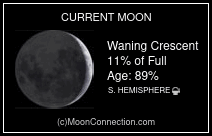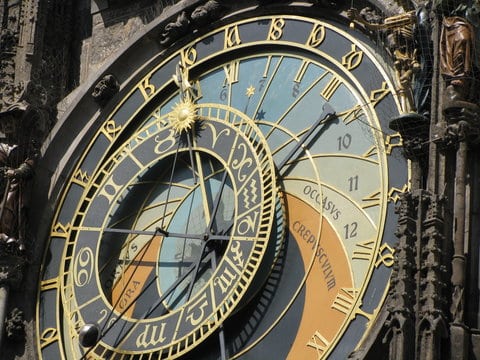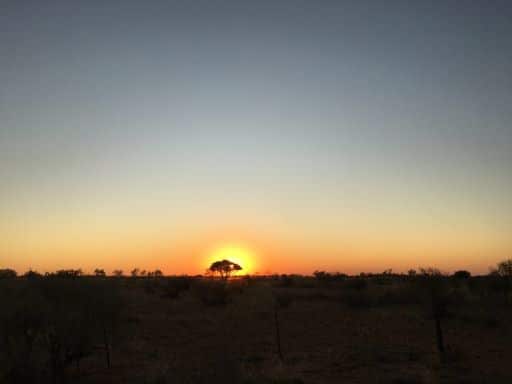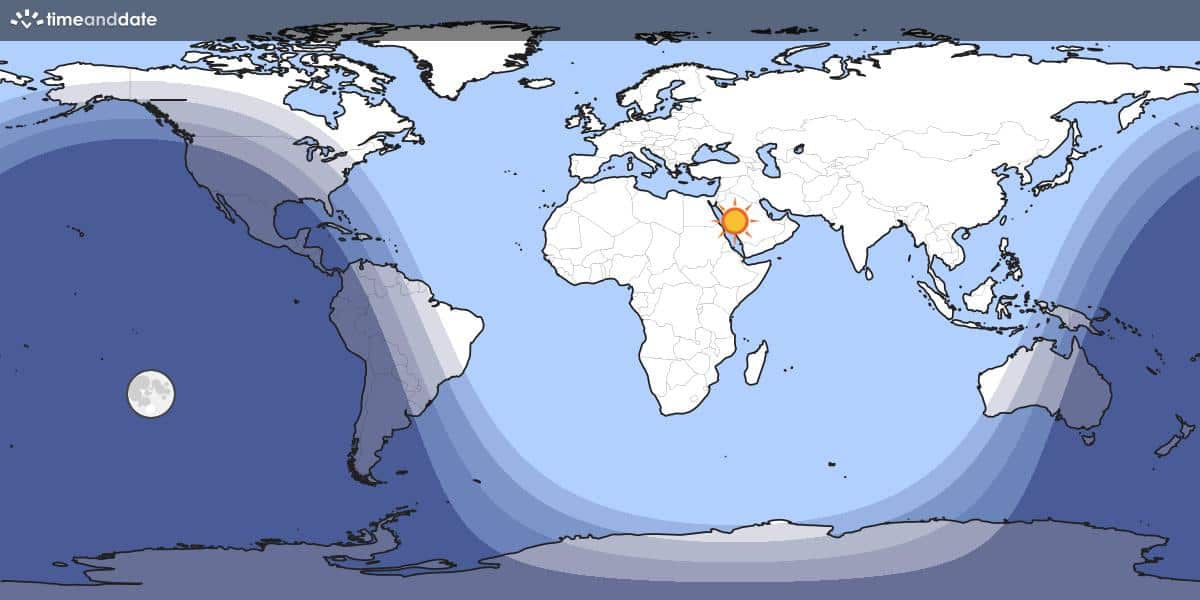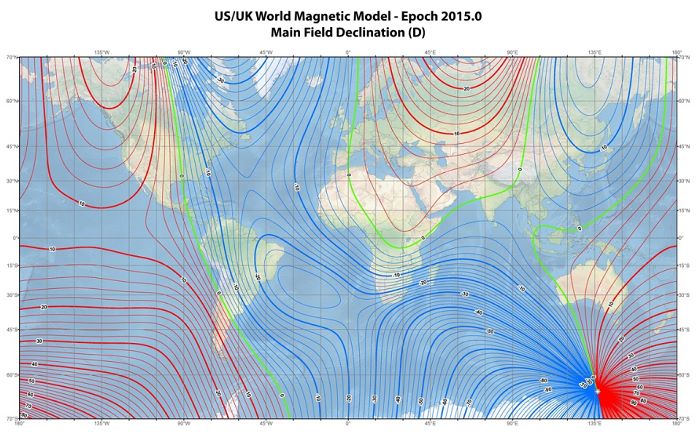N44 Superbubble
Steve Gottlieb’s Observations
NGC 1929 = LMC-N44F = DEM L 140 = ESO 056-107 = LH 47
05 21 38.3 -67 54 50; Dor
V = 12.4; Size 0.8′
24″ (4/7/08 – Magellan Observatory, Australia): this HII knot is the first (NW end) in an impressive star cluster/emission complex (stellar association LH 47) that extends over 7′ in size and includes NGC 1934, 1935, 1936, and 1937. At 260x it appeared as a bright, moderately large, round glow of ~50″ diameter surrounding a 13th magnitude star (O8-type supergiant).
On the DSS this object appears to be a symmetrical bubble with its ionizing O8 star just W of center. This HII complex and cluster includes the Superbubble complex N44.
Notes: John Herschel discovered NGC 1929 = h2840 on 23 Nov 1834 and simply noted “F. The preceding nucleus of the compound nebula figured in fig. 2, Plate III. Place by Delta RA and polar distance, from the chief nucleus measured on diagram.” The sketch clearly established this number refers to the northernmost knot in the complex along the west side.
James Dunlop discovered the LH 47 association = D 175, which contains NGC 1929, on 27 Sep 1826, with a 2nd observation on 6 Nov 1826. He described “a pretty large rather faint nebula, about 5′ diameter, irregular figure, partly resolvable into stars of mixt magnitudes. The nebulous matter has several seats of attraction, or rather it is a cluster of small nebulae with strong nebulosity common to all.” Dunlop’s position is roughly 5′ SSW of the complex and NGC 1929 might be one of the “seats of attraction.”
The SIMBAD position is 1.4′ too far NE and does not correspond with a bright knot.
NGC 1934 = BSDL 1363 = ESO 056-109 = LH 47
05 21 46.9 -67 56 14; Dor
Size 1.1′
24″ (4/7/08 – Magellan Observatory, Australia): NGC 1934 is not as well defined as the other parts with NGC designations in the bright HII complex NGC 1929-34-35-36-37 (stellar association LH 47). It is noticeable as it involves a mag 12 star on the N side along with a number of fainter stars, but is fairly weak in nebulosity. Situated immediately NW of NGC 1935 and E of NGC 1929.
Notes: John Herschel discovered NGC 1934 = h2842 on 23 Nov 1834 and recorded “The second nucleus of the compound nebula figured in fig 2, Plate III, from diagram.” The resolution on the pdf of Herschel’s sketch in the LMC is not sharp enough to identify which “knot” JH is referring to within the complex (NGC 1929, 1935, 1936, 1937). At the position indicated here (from Corwin), there is nothing that stands out on the DSS or in my observation, other than a few stars. The “LMC extended catalog” (Bica+, 1999) places the center of NGC 1934 2′ further north and there is another “knot” near this position on JH’s sketch. Mati Morel identifies NGC 1934 as the entire association LH 47 = S-L 417.
James Dunlop first observed the entire LH 47 association = D 175 on 27 Sep 1826, though NGC 1934 is probably not one of the “seats of attraction” in his description.
NGC 1935 = IC 2126 = LMC-N44B = ESO 056-110 = LH 47 = S-L 417
05 21 58 -67 57 20; Dor
V = 11.2; Size 1.2′
24″ (4/7/08 – Magellan Observatory, Australia): NGC 1935 and 1936, just to its southeast, form a pair of emission glows in a very striking field of clusters and HII patches (part of stellar association LH 47). At 200x and UHC filter NGC 1935 was a very bright, round glow of uniform high surface brightness. The size is slightly smaller than NGC 1936, perhaps 45″-50″ in diameter. Good response to the UHC filter. Nebulosity (BSDL 1363) also extends off to the NW of NGC 1935 and a fainter patch (NGC 1934) involves a couple of brighter stars.
Superimposed on this entire complex of HII knots (and just east of NGC 1935) is a rich concentration of stars (LH 47) that includes a large number of O and early B-type supergiants. NGC 1929, 1934, 1935 and 1936 lie along the western edge of the hollowed out N44 H-alpha superbubble (size 4.5’x3.0′) surrounding many of these stars.
As John Herschel described NGC 1935 on one sweep as “one of the chief nuclei or knots of a large irregular cluster nebula”, this number along with NGC 1936 could also apply to the cluster. Nail and Shapley designated the OB association centered on NGC 1929, 1934, 1935, 1936 and 1937 as “Constellation I” in a 1953 paper on the Magellanic Clouds
Notes: James Dunlop discovered the LH 47 association = D 175, containing NGC 1929, 1934, 1935, 1936, 1937 on 27 Sep 1826, with a 2nd observation on 6 Nov 1826. He described “a pretty large rather faint nebula, about 5′ diameter, irregular figure, partly resolvable into stars of mixt magnitudes. The nebulous matter has several seats of attraction, or rather it is a cluster of small nebulae with strong nebulosity common to all.” Dunlop’s position is roughly 5′ SSW of the complex, a fairly good match. It seems safe to assume that two of these “seats of attraction” were NGC 1935 and NGC 1936 (John Herschel only credited Dunlop with the latter).
John Herschel found NGC 1935 = h2843 on 23 Nov 1834 and recorded “B; S; R. One of the chief nuclei or knots of a large irregular cluster nebula.” He next logged it as “F, S, R. The third of a group of four nebulae connected by stars.” His third observation saw it as “the second nebula of a group of three.” His final sweep was states, “the first bright nebulous head of a large beautiful irregular cluster of resolved stars.” A detailed sketch is shown on Plate III, figure 2.
Williamina Fleming discovered the gaseous spectra of NGC 1935 on Harvard objective plates taken in 1901 at the Arequipa station in Peru and Dreyer catalogued Fleming 90 as IC 2126, although the IC position is just 5 seconds of RA west of NGC 1935. The Hodge-Wright LMC Atlas labels this nebula as IC 2126 instead of NGC 1935 (same with NGC 1936 = IC 2127).
Virginia Nail and Harlow Shapley designated the OB association centered on NGC 1929, 1934, 1935, 1936 and 1937 as “Constellation I” (26’x26′) in a 1953 paper on the Magellanic Clouds.
NGC 1936 = IC 2127 = LMC-N44C = ESO 056-111 = LH 47
05 22 14.3 -67 58 35; Dor
V = 11.6; Size 1.1′
24″ (4/7/08 – Magellan Observatory, Australia): NGC 1936 is situated at the S end of a large cluster (LH 47) and HII complex (N44). It appeared as a very bright, round glow, ~1′ diameter with a very high, uniform surface brightness at 200x using a UHC filter. Additional fainter nebulosity sweeps to the S and W and is connected with an anonymous patch just 1′ W of NGC 1936. This extension increases the total size to 2′ to 2.5′. Mag 8.5 HD 35665 lies 7′ W.
NGC 1935 lies 2′ NW. The well resolved stellar association LH 47 spreads out to the N and NW. A 12th mag blue supergiant (B1-type) is 1.6′ N of NGC 1936 and a 15th mag Wolf-Rayet (Brey 25) is 1′ SW.
Notes: James Dunlop discovered the LH 47 association = D 175, consisting of NGC 1929, 1934, 1935, 1936, 1937 on 27 Sep 1826, with a 2nd observation on 6 Nov 1826. He described “a pretty large rather faint nebula, about 5′ diameter, irregular figure, partly resolvable into stars of mixt magnitudes. The nebulous matter has several seats of attraction, or rather it is a cluster of small nebulae with strong nebulosity common to all.” Dunlop’s position (2 observations) is roughly 5′ SSW of the complex. It seems safe to assume that two of these “seats of attraction” were NGC 1935 and NGC 1936, the brightest knots in the complex.
John Herschel observed NGC 1936 = h2844 on 23 Nov 1834 and recorded “pB; S; R. Another chief nucleus or knot of the cluster nebula.” He next logged it as “pB, S, R, The fourth of a group of four, connected by stars, etc.” On the third sweep, he wrote “the third nebula in a group of 3.” The 4th sweep saw it as “the last of three nebulae in a zig-zag formed cluster.” On his 5th sweep, he noted “the southern and brightest nebular nucleus of a great branching cluster.” A detailed sketch of the entire complex is on Plate III, figure 2.
Williamina Fleming discovered the gaseous spectra of NGC 1936 on Harvard objective plates taken in 1901 at Arequipa and Dreyer catalogued Fleming 91 as IC 2127, although the IC position is just 4 sec of RA west of NGC 1936. The Hodge-Wright LMC Atlas labels this nebula as IC 2127 instead of NGC 1936 (same with NGC 1935 = IC 2126).
IC 2128 = LMC-N44D = BSDL 1449 = ESO 056-113 = S-L 429 = LH 49
05 22 44 -68 03 07; Dor
V = 11.1; Size 3′
25″ (4/3/19 – OzSky): Unfiltered, about a dozen stars are resolved (cluster S-L 429) over irregular hazy nebulosity, including 4 brighter stars mag 12.5-13 (two of these form a 15″ pair). A mag 9.2 star (HD 35978), with an easy 15th mag companion, is just off the east side. Excellent contrast boost with a NPB filter; the nebulosity appeared extremely bright, very high surface brightness, irregular shape with internal structure. Quite striking!
N44K is ~2.5′ W, N44H is 3′ N, N44E is 4′ NE and N44L is just off the W sides of N44E.
14″ (4/7/16 – Coonabarabran, 145x): Using an NPB filter, a bright compact patch ~30″ diameter was prominently visible just 1′ SW of a mag 10 star (HD 35978). Much fainter nebulosity spreads out to 1.5′. Three mag 13-14.5 stars are involved without the filter and a few more are further northwest. A mag 9.2 star (HD 35862) is 4.2′ W and a mag 11 star is 2.1′ NNE. The IC 2128 nebula (N44D) is located at the southeast end of the NGC 1929-1936 complex (N44) and the stellar component is association LH 49. N44H is 2.3′ N (part of the same complex). A star is involved unfiltered.
Notes: James Dunlop discovered IC 2128 = D 176 on 27 Oct 1826. He described it as “a small faint nebula. A small star near the following margin but not involved.” His position is close off the SE side of IC 2128 and the the mag 9.7 star HD 35978 at the east end appears to secure the identification. John Herschel didn’t record this object, although he observed the complex of nebulae to the north that includes NGC 1929, 1934, 1935, 1936 and 1937 on several sweeps.
Solon Bailey rediscovered IC 2128 photographically in 1896 using a 1-inch Cooke lens at the Arequipa station in Peru. The discovery was announced in the 1908 “Catalogue of Bright Clusters and Nebulae”, Annals of Harvard Observatory, Vol 60, p199.
SIMBAD classifies IC 2128 as an HII (ionized) region only and the position is ~2′ NNE of the brightest emission region.
LMC-N44K = DEM L 158
05 22 19 -68 04 24; Dor
Size 0.7′
25″ (4/3/19 – OzSky): at 244x + NPB filter, fairly bright, fairly small, round, 40″ diameter, brighter on the south edge (N44G). Located 2.5′ W of IC 2128 and 1′ E of mag 9.25 HD 35862.
LMC-N44H
05 22 49 -68 01 18; Dor
Size 0.8′
25″ (4/3/19 – OzSky): at 244x; unfiltered this nebulous piece of the N44 complex surrounds a mag 14 star and a second much fainter star. Adding a NPB filter, the nebulosity appeared moderately bright, fairly small, round, 30″ diameter. HD 269445, a mag 11.5 Wolf-Rayet (Ofpe/WN9) is 1′ SE. Located 3′ N of the center of IC 2128.
14″ (4/7/16 – Coonabarabran, 145x): Using an NPB filter a moderately bright, detached glow, ~30″ diameter, was noticed 2.3′ N of IC 2128. A star is involved unfiltered. A mag 11 star is 1.1′ ESE. This patch is part of the NGC 1929-1937 HII complex and association.
LMC-N44L
05 23 05.9 -68 00 14; Dor
Size 0.5′
25″ (4/3/19 – OzSky): at 244x + NPB filter; very faint, small glow detached from N44E which is immediately east. N44L is situated 4′ NNE of IC 2118 in the N44 complex.
LMC-N44E
05 23 15 -68 00 14; Dor
Size 0.8′
25″ (4/3/19 – OzSky): at 244x unfiltered; a mag 13 star is involved, along with two mag 15+ stars. Adding a NPB filter boosts the visibility of the nebulosity and it appeared nearly fairly faint, roundish, ~30″ diameter. A mag 13 star is close off the north edge. N44L is just off the west side. Located 4.5′ NE of IC 2128 (N44D).



